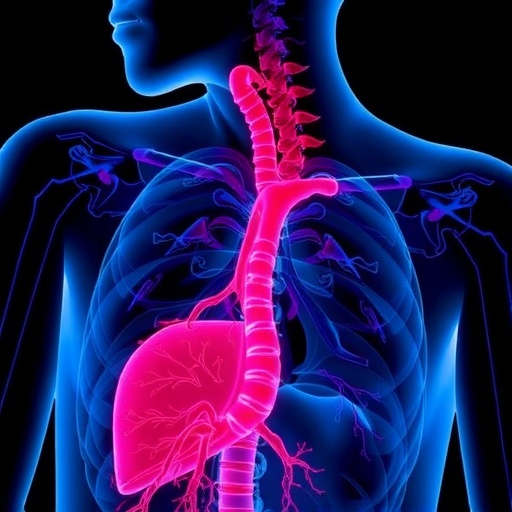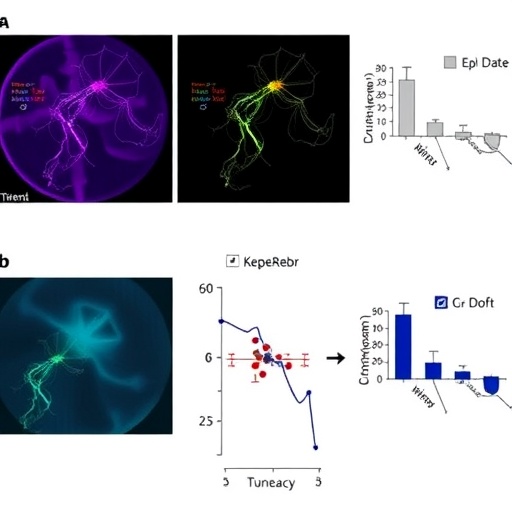
In a groundbreaking study published in BMC Endocrine Disorders, researchers have delved into a potentially alarming correlation between carotid artery calcifications, pulp stones, and diabetes mellitus. With diabetes mellitus being a global health crisis that affects millions, this research aims to shed light on possible early warning signs that could lead to timely interventions. The authors of the study, Baghestani, Faregh, and Razavi, emphasize the importance of understanding this relationship to enhance diagnostic and preventive strategies in medical practice.
Carotid artery calcifications are a condition characterized by the buildup of calcium deposits in the carotid arteries, which supply blood to the brain. The presence of these calcifications has been linked to increased cardiovascular risks, including stroke and heart attack. However, the emerging narrative suggests that these calcifications may also signify metabolic disorders such as diabetes. The intricacies of this relationship warrant a comprehensive examination, as early identification could crucially alter the clinical approach to managing at-risk populations.
Pulp stones, on the other hand, are calcifications that can form within the dental pulp of teeth. While they are often asymptomatic and go unnoticed, their presence might suggest underlying systemic conditions. The connection between oral health and systemic diseases is well-documented, with emerging evidence pointing towards a bidirectional relationship between oral conditions and diabetes. This study sets out to explore whether the presence of pulp stones can serve as an additional marker for metabolic disorders like diabetes.
To conduct their analysis, the researchers executed a retrospective observational study, wherein they examined a considerable database of patient records. By juxtaposing imaging results and clinical information, the researchers sought to determine whether there was a statistically significant association between the presence of carotid artery calcifications and pulp stones in patients with diabetes mellitus. The methodology utilized in the study is robust, as it combines quantitative data with thorough insights into the patient’s medical history.
The implications of the findings are immense. If carotid artery calcifications and pulp stones are indeed reliable predictors of diabetes, healthcare practitioners could pivot towards a more holistic approach when assessing patients. This study propels the conversation forward on the integration of oral and systemic health in the clinical setting. Dentists and general practitioners alike could play a pivotal role in identifying at-risk individuals who may benefit from further diabetes screening.
Moreover, the study highlights the need for heightened awareness among healthcare providers regarding the multifaceted signs of diabetes. Often, diabetes is underdiagnosed, especially in its early stages, where lifestyle modifications and monitoring could yield enormously beneficial outcomes. The presence of these calcifications and pulp stones could serve as visual markers prompting more attentive follow-ups and screenings.
As we step into an era of personalized medicine, understanding the intricate connections between different health markers becomes increasingly critical. The link established in this study not only illuminates specific physiologic relationships but also underscores the interconnectedness of body systems. A more integrated approach in which dental and medical professionals collaborate may ultimately enhance patient outcomes by facilitating earlier diagnosis and intervention.
What makes this research particularly noteworthy is its consideration of non-invasive diagnostic tools. Imaging techniques such as X-rays, which are routinely used in dental exams, can potentially serve a dual purpose in identifying metabolic disorders. This could significantly streamline the patient pathway, ensuring that individuals are identified and treated for diabetes even during their regular dental check-ups.
The findings of this study undoubtedly resonate with the broader implications of public health. With diabetes rates soaring globally, uncovering novel methods for detection and prevention is paramount. An understanding that something as seemingly unrelated as dental health could harbor critical warnings about diabetes opens the door for further interdisciplinary collaboration in healthcare.
In conclusion, the study by Baghestani et al. unveils a compelling narrative concerning the interplay between carotid artery calcifications, pulp stones, and diabetes mellitus. As research continues to evolve, the healthcare community must remain responsive to such revelations that could redefine standard practices. The promise of early warning signs for one of the world’s most pressing health issues could pave the way for more efficient healthcare delivery and improved patient outcomes.
In light of these discussions, the challenge remains for scientists and clinicians to translate these findings into actionable guidelines that influence both clinical practice and patient education. By fostering a deeper understanding of the relationship between dental and systemic diseases, we can embark on a journey towards comprehensive care that prioritizes prevention and early detection. This transformative perspective not only holds the potential to save lives but also to reduce the burden of chronic diseases on global health systems.
Ultimately, the urgency for dialogue in the realm of health sciences has never been more pronounced. The interconnectedness of bodily systems compels us to rethink how we perceive health and disease. As the medical community continues to uncover correlations and associations, it becomes essential to embrace a holistic view of health that transcends traditional boundaries. The research conducted by Baghestani and colleagues serves as a vital contribution to this ongoing conversation, promising a future where early detection and intervention becomes the norm rather than the exception.
As we move forward, a collective effort is needed to integrate these findings into everyday clinical practice, ensuring that patients are not merely treated for their symptoms, but rather guided on a path toward optimal health. Closing the gap between dental health and systemic disease management will require commitment from all sectors of healthcare. By doing so, we can create a health environment that is proactive, informed, and laser-focused on the well-being of individuals and communities alike.
Subject of Research: The association between carotid artery calcifications, pulp stones, and diabetes mellitus.
Article Title: Could carotid artery calcifications and pulp stones be an alarm sign for diabetes mellitus? A retrospective observational study.
Article References:
Baghestani, M., Faregh, M., Razavi, S.H. et al. Could carotid artery calcifications and pulp stones be an alarm sign for diabetes mellitus? A retrospective observational study.
BMC Endocr Disord 25, 191 (2025). https://doi.org/10.1186/s12902-025-02005-z
Image Credits: AI Generated
DOI:
Keywords: Carotid artery calcifications, pulp stones, diabetes mellitus, observational study, public health, dental health.
Tags: BMC Endocrine Disorders studycalcium deposits in carotid arteriescardiovascular risks and diabetesCarotid artery calcifications and diabetesconnection between oral health and systemic diseasesdental pulp calcifications significancediabetes mellitus early warning signsdiagnostic strategies for diabetesimplications of carotid calcifications in diabetes managementpreventive healthcare for at-risk populationspulp stones and metabolic disordersrelationship between systemic health and dental health





